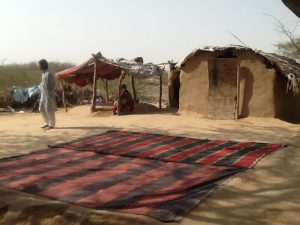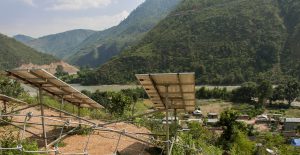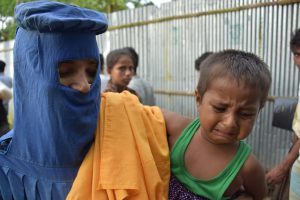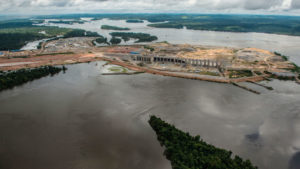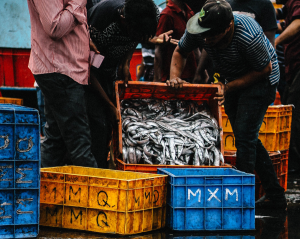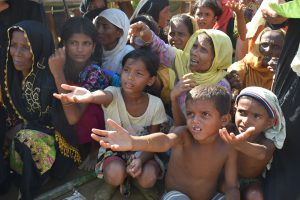Glaciers in Pakistan’s high mountains have more ice than anywhere outside the world’s polar regions. Many of the country’s 5,000 glaciers are now melting at a much faster rate due to increased temperatures in the mountain valleys. The picturesque valley of Bagrote in Gilgit-Baltistan is home to half a dozen glaciers, and the warming climate is creating dangerous conditions for the valley’s inhabitants.
Glacial floods happen regularly in the mountainous regions of Khyber Pakhtunkhwa and Gilgit-Baltistan. Floods occur when the lakes formed by the glacial melt burst, carrying debris and boulders that can cause considerable damage. There are now 3,044 glacial lakes and it is estimated that 33 of them are likely to result in glacial lake outburst floods. Such flooding releases millions of cubic metres of water and debris in just a few hours, putting more than seven million people in northern Pakistan at risk.
In 2011, the Bagrote valley was selected as a site for a pilot project to reduce the risks of glacial lake flooding. The USD 7.6 million project, which was completed over four years, was one of the first initiatives funded by the UN-backed Adaptation Fund. The project’s review found enough merit for it to be resubmitted to the Green Climate Fund (GCF) for further funding. In October 2016, the expansion of the five-year, USD 37.5 million, glacial lake outburst flood risk reduction project was approved. Based on lessons learnt, the project will introduce early warning systems, engineering structures and disaster management policies that the GCF hopes will reduce risk and protect local communities.
Depending on who you talk to in Bagrote, the previous project was anything from 50% to 100% successful. “Certainly the bunds [protection walls] built by the project have saved several settlements in the valley from floods in 2013 and 2014,” says Zeeshan, who lives in Bulchi village a mile away from the massive Hinarchi glacier, which is melting and causing glacial flooding on a regular basis. Bulchi is one of nine declared safe havens where villagers from surrounding areas can seek shelter when a glacial flood hits the valley. They’re all located in high areas and equipped with toilets, clean drinking water, tents, ropes, emergency lights and first aid kits so that villagers can use them as temporary shelters.
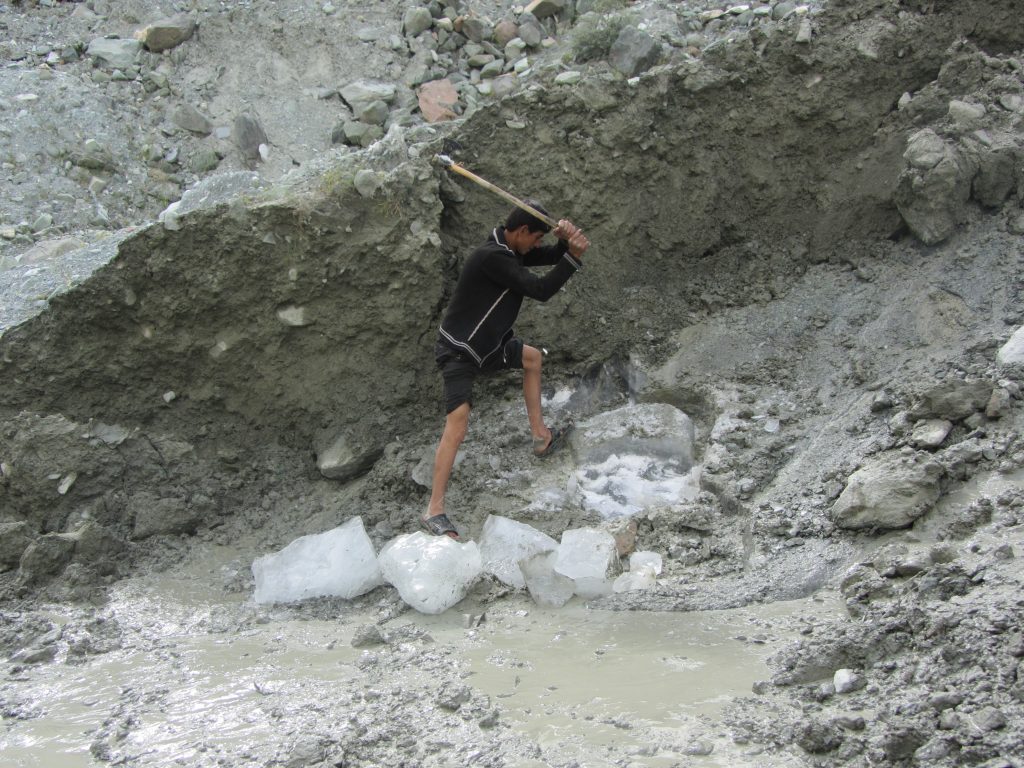
The previous Bagrote valley project built seven flood protection walls around vulnerable villages. Some were built with concrete while others used stone-filled, wire-mesh cages to divert the floodwater and debris away from the settlements and into the rivers flowing through the valleys. “We actually need more of these protective walls in the valley,” says Zeeshan.
Ibrahim works for the Dubani Development Organisation, which was the local partner to implement the project in Bagrote, and is in charge of the early warning system. “If rains are forecast in this area, the Pakistan Meteorological Department (PMD) in Islamabad informs the Gilgit office and they notify me,” he says. “I tell the Dubani office holders and they warn everyone by phone and by loudspeakers in mosques.”
Local shepherds up in the pastures also warn Ibrahim if any glaciers start breaking off. The PMD has set up four automatic weather stations in the valley as well as an automatic discharge instrument in the river below Hinarchi glacier to measure water speed and quantity. The department also regularly sends maintenance crews to ensure all the equipment is working and the data is sent directly to Islamabad.
But a major criticism of the project is that women in this conservative valley were not involved in the awareness trainings as actively as men. “There is a strict purdah system here, all the active members of the Dubani Development Organisation are male,” says one villager who wished to remain anonymous. “The project needs to sensitise the women as well, as they make all the decisions in the households.”
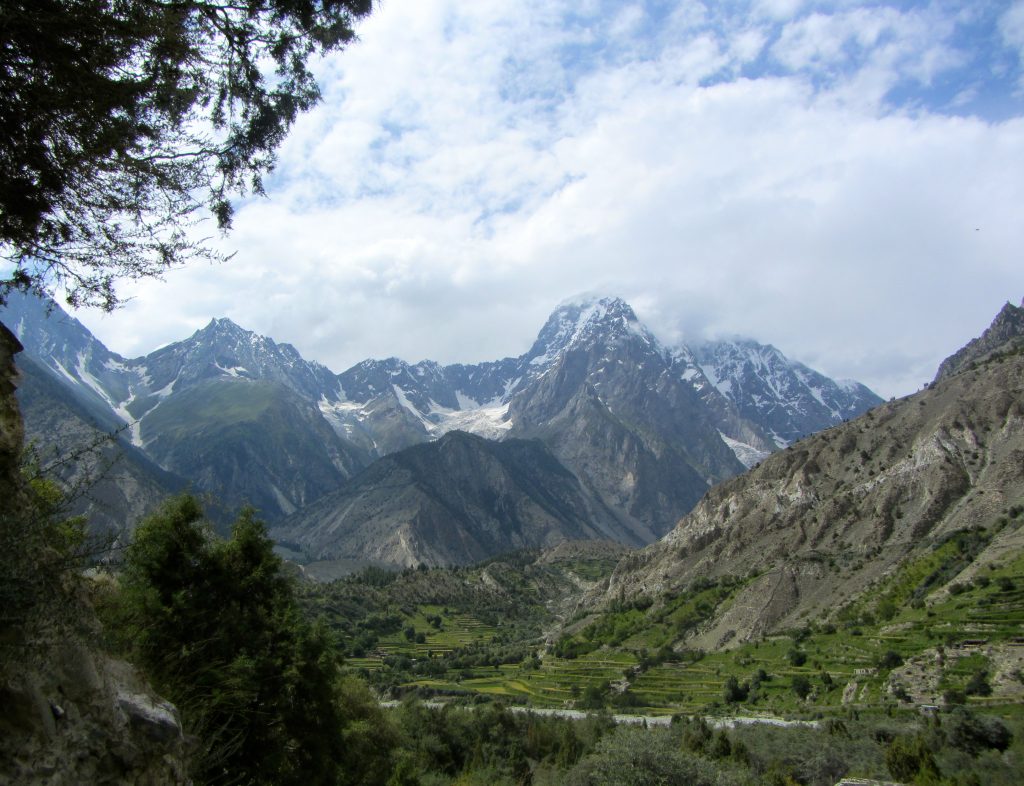
Local villagers often climb up to the Hinarchi glacier to cut off large blocks of ice from the glacier to use at home for cooling or to sell in the bazaars. This is hastening the melting of the glacier and awareness about this harmful activity should spread to every household.
The chairman of the Dubani Development Organisation, Shahadat Noor, is confident that the project has been “100% successful” and he looks forward to the expanded project. “There are 13 to 14 glaciers in Bagrote. Hinarchi is the dangerous one and it is receding, while Dargo glacier’s lake also needs to be monitored,” he explains. He works to mobilise local communities and help with interventions. Dubani also set up hazard watch groups in nine villages, along with a disaster management committee with representatives from each village that is supposed to meet every month in the dusty office where the emergency response cell is located. Noor’s local support organisation received funding for all its activities and says much more work needs to be done in Bagrote.
The new project will spread to all seven districts of Gilgit-Baltistan and five districts of Chitral. The project plans to build 250 engineering structures including dams, ponds, spillways, tree plantation and drainage to reduce risk. It will also develop disaster management policies and introduce weather monitoring stations, flood gauges, hydrological modelling and early warning systems. The role of women will also be enhanced.
“This time it will be a much bigger team with bigger mobilisation,” says Kashmala Kakakhel, a climate finance expert. In her opinion, this two-step approach is a blessing in disguise. “The pilot tried various interventions in impacted districts and the fact that it is getting more international funding means they got some things right. The external review was positive which is why it was easier to get funding from international sources. More money means more lives will be impacted and more disasters can be averted.”
![<p>The Hinarchi glacier perches above a village in Bagrote Valley [image by: Rina Saeed Khan]</p>](https://dialogue.earth/content/uploads/2017/10/Hinarchi-glacier-just-above-a-village-in-Bagrote-Valley-e1506936039764.jpg)


